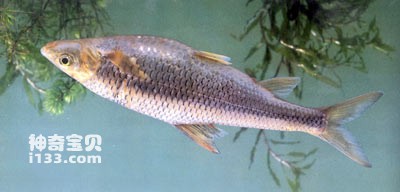Acrossocheilus yunnanensis belongs to the order Cypriniformes, Cyprinidae, subfamily Acrossocheilus, and genus Acrossocheilus yunnanensis. Commonly known as: horse fish, flower fish.
The body is slender, with flat sides and a round abdomen; the head is small and tapered; the snout is round and blunt, and the snout ends at the base of the upper lip. The mouth is small, inferior, and horseshoe-shaped. The vertical line extending backward from the maxilla to the front edge of the nose. The upper lip is thicker, smooth, and close to the surface of the maxilla. The upper lip groove is deep and obvious; the lower lip is retracted behind the edge of the mandible and is divided into two parts to form side flaps. The distance between them is approximately equal to 2/3 of the eye diameter. The lower jaw is exposed without horny edges. There are 2 pairs of barbels, the jaw barbels are larger than the eye diameter, and the kiss barbels are only 1/2 of that. The dorsal fin spines are well developed and the trailing edge is strongly serrated. The back of the body is blue-grey, the lower half of the body and the abdomen are gray-white with a slight yellow color, the caudal fin is blue-gray, the membrane between the fins is black, the other fins are gray-yellow, the lower lobe of the caudal fin is slightly reddish, and the front of each scale on the back and side of the body is black. Edge, base of caudal fin black. Juvenile fish have 10-11 small black spots along the lateral line. Adult fish have no markings.

It is a resident fish in the middle and lower layers. It can live in rivers and lakes, and often inhabits rocky slow-flowing water environments. Omnivorous, they feed mainly on filamentous algae, followed by aquatic plants, and also eat some animal food. Eggs are laid in running water from May to July. The eggs are not large, usually 15-20 cm.
Distributed in the Pearl River system, the middle and upper reaches of the Yangtze River and its tributaries. The meat is available for consumption. The output is quite large and has certain economic value. The eggs are toxic, especially during the spawning period. Those who accidentally eat fish eggs and are poisoned will have symptoms such as abdominal distension, abdominal pain, vicious vomiting and diarrhea, dizziness and headache, etc., and must be treated in time.
animal tags:
We created this article in conjunction with AI technology, then made sure it was fact-checked and edited by a Animals Top editor.